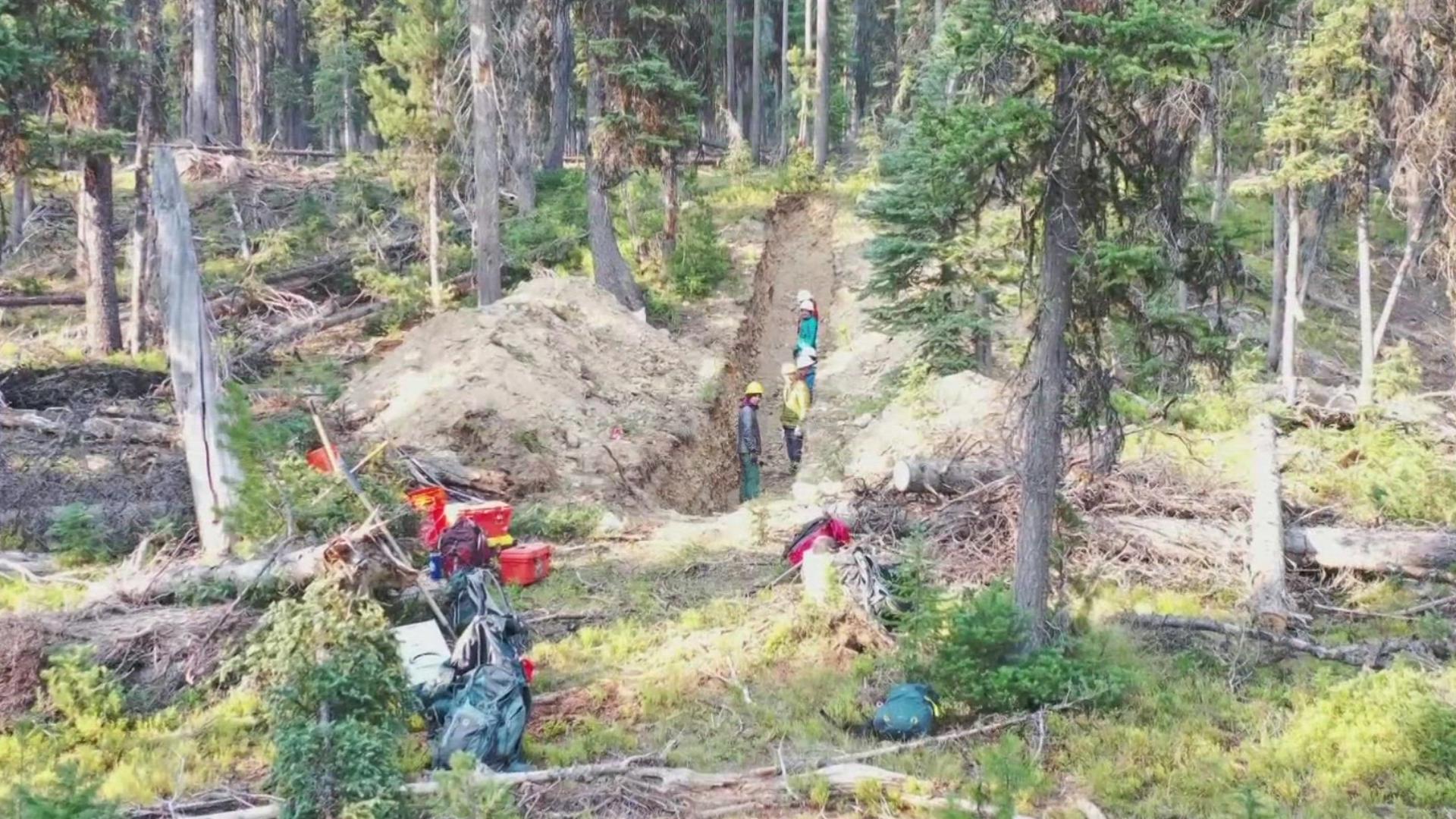BOISE, Idaho — In March of 2020, Southern Idaho was rattled by the biggest earthquake in almost 40 years. The earthquake was originally thought to have happened along the Sawtooth fault line. But now, new research shows that may not be the case.
Dr. Glenn Thackray, Professor of Geosciences at Idaho State University, and Dr. Zach Lifton, Geologic Hazards Geologist at the Idaho Geological Survey, are part of the research team that looked into exactly where the epicenter might have been.
Dr. Thackray said he's been studying the Stanley area and the Sawtooth fault for about 25 years. But unfortunately, he didn't feel the 2020 earthquake at all, "I feel a little cheated...My daughter was in the basement of our house about five blocks from me, and she called me and said, 'Did you just feel a rumble or something?' And I said, 'No.'"
Dr. Lifton described the moment he started to feel the shaking, "Pretty quickly, I realized it wasn't just a big truck driving by. An earthquake was pretty likely. Then, my next thought was, which fault is it? That's a question that's on my mind a lot. What are the faults that could impact Idaho?"
The epicenter of the earthquake was near Stanley and the Sawtooth fault, which are known for seismic activity. Even though there's seismic activity across this general area, pinpointing which fault line is responsible is difficult.
"We assumed it was on the Sawtooth fault because it was located very close to the Sawtooth fault," Dr. Lifton said.
But, close isn't confirmation.
"Geology is a puzzle, and we don't always have a clear picture of what's happening. We have little pieces, and it can be pretty ambiguous, we just do the best we can to put it together with what we've seen," Dr. Lifton said.
So, researchers headed out to see more. Dr. Lifton detailed their process, they used data from aftershocks and LiDAR imaging to see details of the ground's surface and pick a site for their study.
"LiDAR is a really important tool for doing this kind of mapping," he said.
Researchers began to dig a trench across the Sawtooth fault line to gather more data.
"By digging a trench across it, we can look at the soil layers that are exposed in that trench and try to decipher what's the history of earthquakes on that fault," Sawtooth Fault. Dr. Lifton said. "How big are they? How often do they happen?"
Dr. Lifton added this was the first trench ever dug on the Sawtooth Fault and trenches are the gold standard for understanding a fault's history.
Through their research, scientists found the 2020 earthquake did not happen on the Sawtooth fault.
"The fault that we think caused the Stanley earthquake is not quite in the same place," Dr. Lifton said.
This is not what researchers were expecting to find. Dr. Thackray elaborated the Sawtooth fault intersects with a different fault system that scientists know very little about.
Their research led to the discovery of a new fault line, one they hope to study even more. Dr. Thackray enthusiastically added, "It's a very exciting time up in that area, there's now a lot of attention on these two fault systems."
"From a scientific point of view, being able to study these things is exciting. The Stanley earthquake was great because it didn't hurt anybody. So in that case, we can learn about that, maybe apply that to other places, and maybe try to help people," Dr. Lifton said, echoing Dr. Thackray's sentiment.
Dr. Lifton also said researchers are applying for grants to dig more trenches along the fault.
"There's information locked up in there" that may provide more information about seismic activity of the past, and a better idea of what it may look like in the future," Dr. Lifton said.

